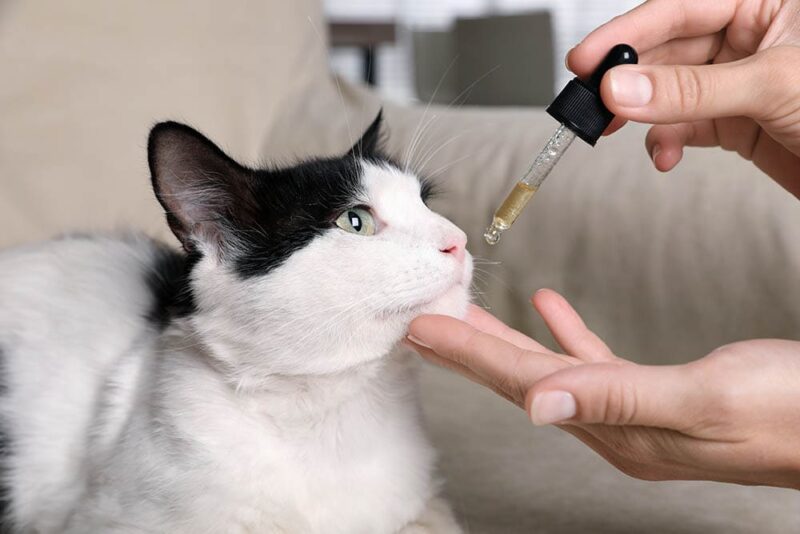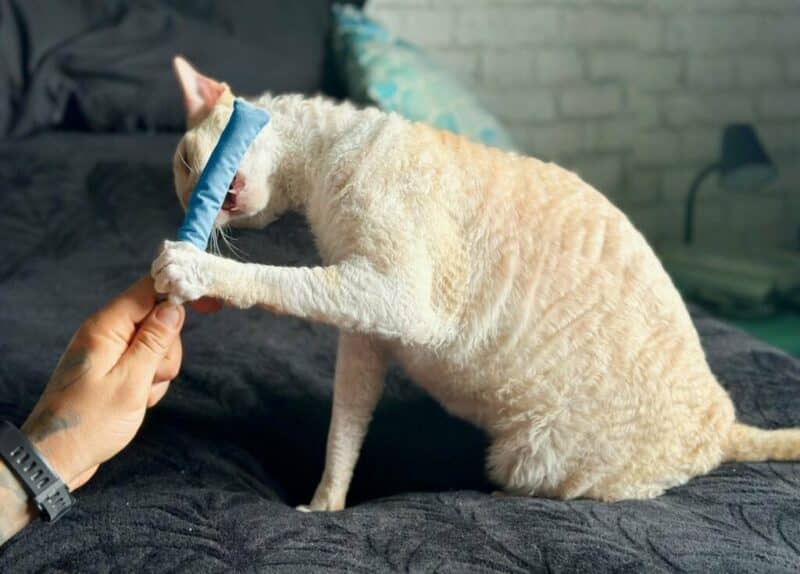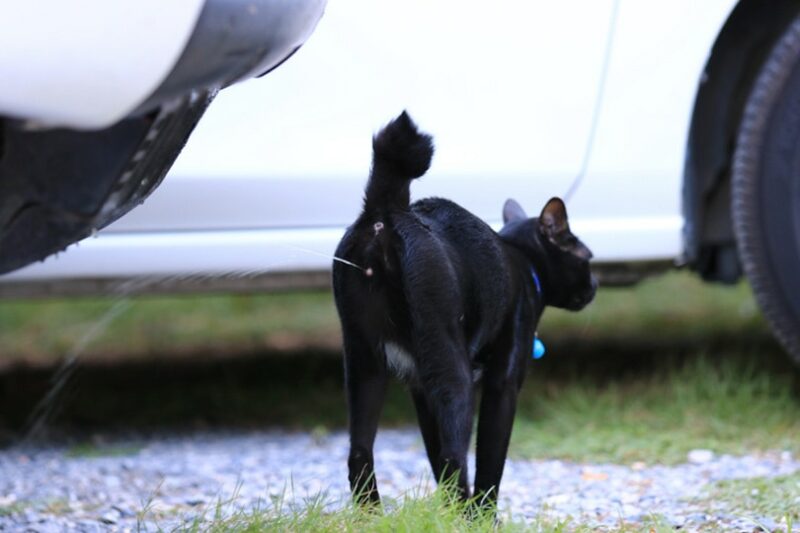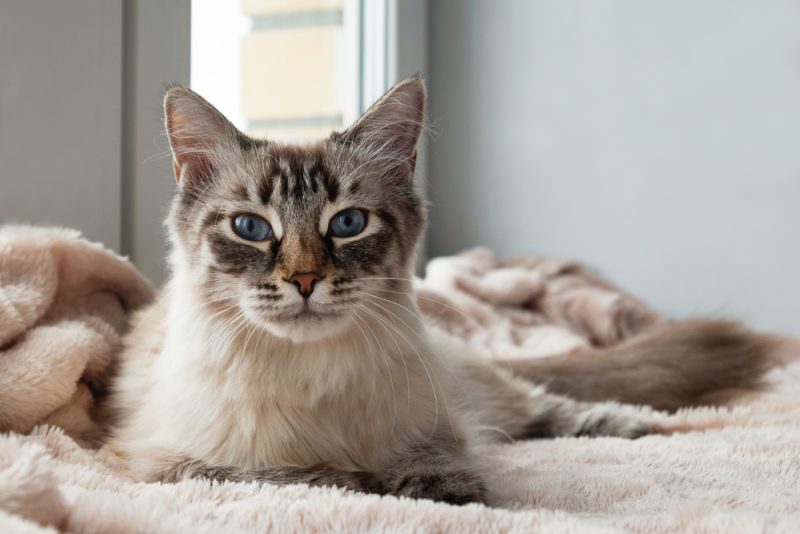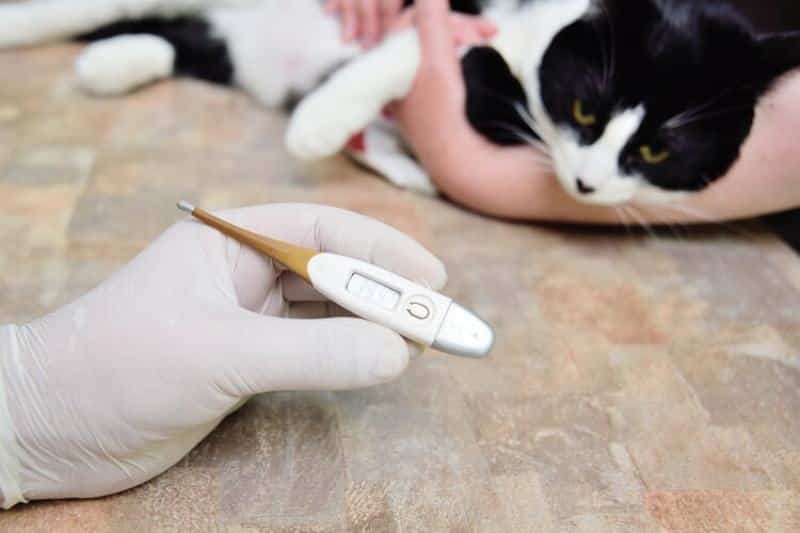In this article
View 5 More +There are all sorts of reasons for a cat to start limping. An injury to the muscle or bone is what most commonly comes to mind first, but in some cases, damage to a cat’s nerve could look like this too. How do you know if a cat has hurt their nerves? Does that get better?
We have everything you need to know about one example of this, radial nerve paralysis, which you’ll find to be much more common in cats than dogs.
What Is Radial Nerve Paralysis?
The radial nerve is one of the major nerves of the forearm in mammals, including cats. It branches out from the spinal cord at about the level of the shoulder and extends down to the toes (fingers for us), controlling the contraction of certain muscles in its path. The radial nerve contributes to the extension of a cat’s elbow, wrist (carpus), and front toes. It also communicates sensation felt on the outside/outside-top aspect of the forelimb and paw.
Paralysis of the radial nerve, therefore, is the loss of these functions. This is most often due to trauma, like a fall, getting hit by a car, or penetrating trauma, like an animal bite or gunshot wound. Paralysis can start anywhere along the route of the nerve, wherever an injury or abnormality occurs to cause it, so in rare cases, that can include things like tumors along the nerve or at the root of the spinal cord too.
A bundle of nerves controls the movements and sensations of the forearm that pass and branch off near each other around the shoulder area, called the brachial plexus. Brachial plexus injuries can result in radial nerve paralysis that may also affect other nerves.
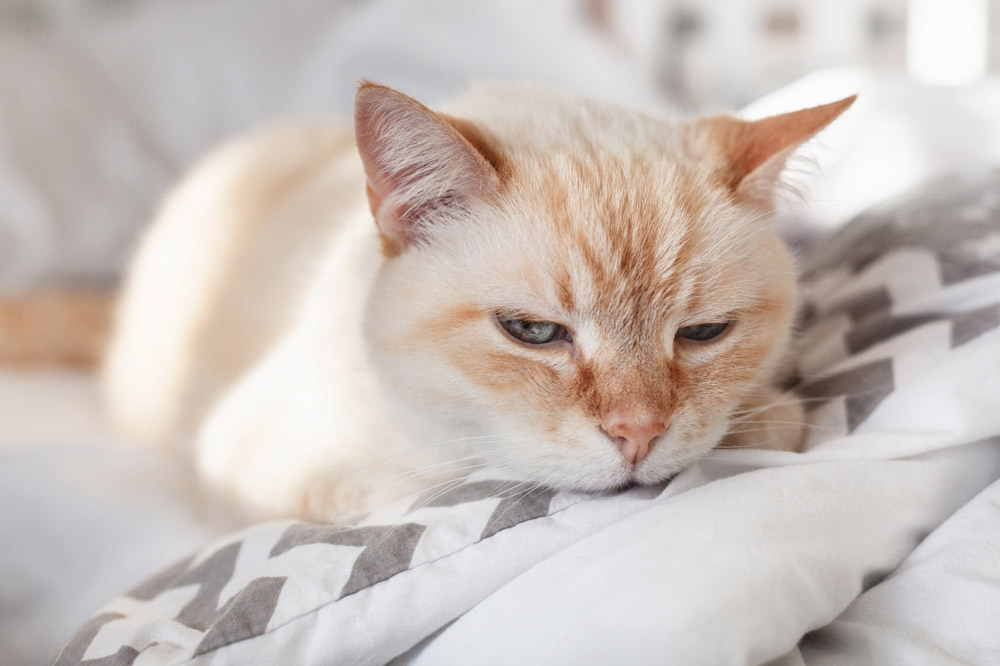
Anatomy of a Nerve
To better understand radial nerve paralysis, it helps to understand the different parts of a nerve. The radial nerve is a peripheral nerve, meaning not of the central nervous system like the spinal cord.
A nerve cell appears like a long cord, called an axon, that electrical impulses travel down, which has dendrites at the end that function like little feelers to carry electrical impulses to the next nerve cell or the tissue they’re innervating and is covered in connective tissue layers that help keep the nerve healthy and able to conduct those electrical impulses or nerve signals.
What Are the Signs of Radial Nerve Paralysis in Cats?
- Weak or non-weight-bearing front limb
- Flexed elbow, wrist, and or toes
- Front limb muscle loss
- Flaccid, possibly dragging front limb
- Trauma on the top of the paw from dragging on the
- Knuckling or walking on the top of the paw
- Weak or absent front limb reflexes
- Almost always one front limb is affected rather than both
What Are the Causes of Radial Nerve Paralysis in Cats?
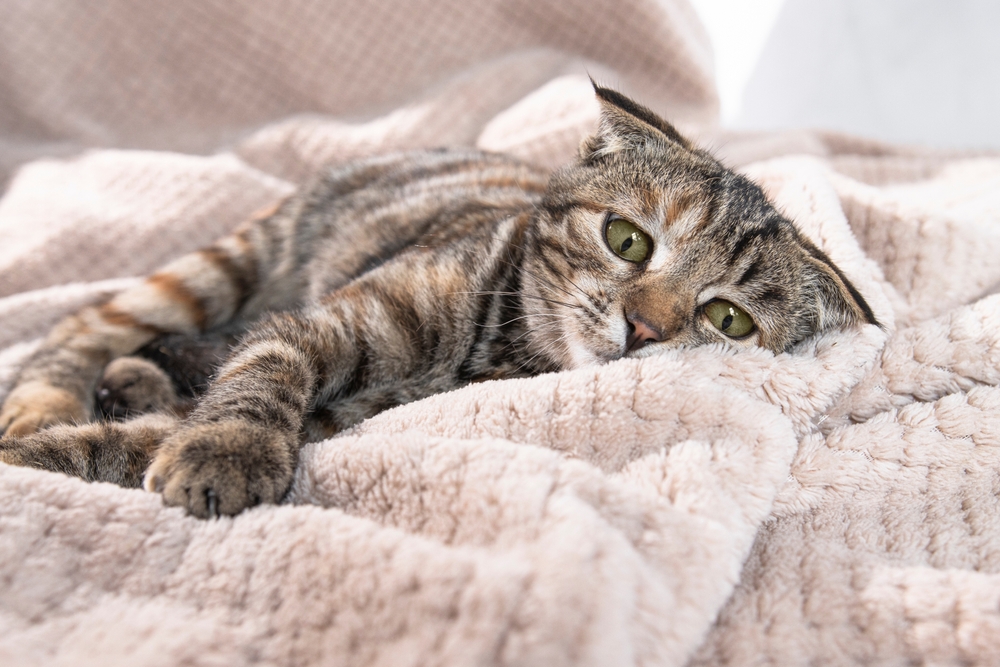
Blunt trauma is one possible cause of a radial nerve injury leading to paralysis. Landing on the shoulder from a large jump, like off a cat tree, a roof, or fence, can hurt the nerve. Cats who spend time outdoors are more likely to experience radial nerve paralysis.
More significant traumas can cause radial nerve paralysis too. Breaks in the bones of the forelimb can hurt the nerves around them, which may be in addition to blunt trauma, like getting hit by a car.
Penetrating traumas can hurt or sever nerves. Dog bites, especially if the cat is shaken, can cause radial nerve paralysis. Gunshot wounds are another unfortunate possibility.
Cancers of the radial nerve can lead to radial nerve paralysis, as can other tumors that happen to be near the nerve. Tumors or trauma to the root of the radial nerves where the nerve for each forelimb comes off the spinal cord are a reason to have signs in both front limbs, but this isn’t common.
How Is Radial Nerve Paralysis in Cats Diagnosed?
Most of the time, the physical examination and any relevant history are enough to diagnose radial nerve paralysis in a cat. If a bone has potentially been broken, leading to nerve damage, X-rays need to be taken for the bone rather than the nerve. There are electrical stimulation-type devices to assess nerve activity, or MRIs or ultrasounds to visualize the nerve itself, but these diagnostics are rare in veterinary medicine.
Luckily, visualizing the nerve is often unnecessary since tracking where the paralysis starts on the limb can isolate the location of the injury.
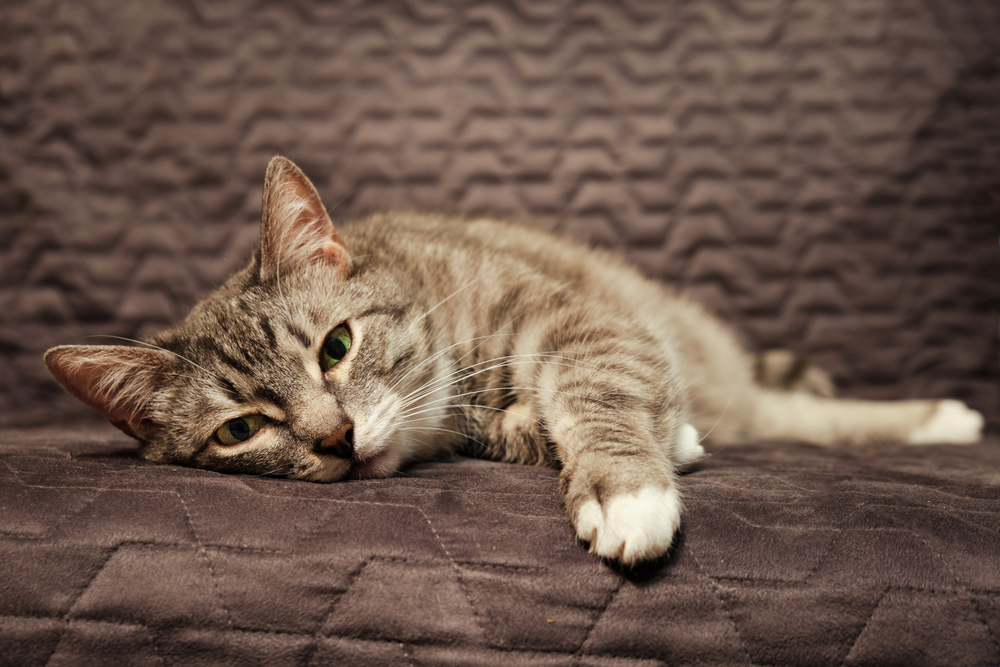
How Is Radial Nerve Paralysis in Cats Treated?
Some nerve injuries, if given time, will heal themselves. Peripheral nerves can heal at a rate of about 1 mm/day. Their ability to do this depends on the level of injury to the nerve, of which there are three stages. These are the three, from least to most severe:
- Neuropraxia: Nerves have layers, and in this type of injury, the outer connective tissue layers are affected, but the axon, which is responsible for conducting signals down the nerve, is still intact. Signals are unable to conduct at times due to the loss of the connective tissue layer, but this can be recovered fully with time.
- Axonotmesis: The axon is interrupted or severed, but the connective tissue layers are still intact. This leads to loss of function of the nerve distal to the injury and takes time to regrow the axon at the 1 mm/day rate.
- Neurotmesis: The entire nerve, through all the layers, has been severed. In these cases, the nerve cannot typically regrow on its own.
In cases of neurotmesis, the nerve will not heal without surgery to reconnect the severed nerve pieces.
If trauma causes radial nerve paralysis, it is also important to treat any other aspects of the trauma, such as broken bones, skin damage, open wounds, bleeding, and more.
In some cases, usually radial nerve paralysis cases that do not heal on their own or cases where the cat starts to chew on the affected limb, amputating the limb may be required. Luckily cats typically adjust very well to living with three limbs instead of four as long as they can live inside.
If you need advice on how to care for your cat, we suggest speaking to a vet.
If you need to speak with a vet but can't get to one, head over to PangoVet. It's an online service where you can talk to a vet online and get the advice you need for your pet — all at an affordable price!

How Do I Care for a Cat With Radial Nerve Paralysis?
For cats that need time to heal their injury, we provide supportive care to keep them comfortable and safe while that happens. That usually starts with assessing their environment for risks, like potentially removing or blocking areas they climb and jump from.
Cats may drag their paws, causing trauma. The paw can be wrapped or placed into a boot to protect it if the cat allows it.
If the limb lacks pain sensation, cats will sometimes start to chew on the limb. If the nerve just needs time to heal, the cat can be placed into an e-collar to protect the limb, but the loss of pain sensation holds a very poor prognosis for nerve rehabilitation, and so this may alternatively be a case that requires amputation of the limb as the better plan.

Physical therapy is incredibly important for cats healing from radial nerve paralysis. Continuous movement of the limb, the joints, and the skin is required to increase the chance the limb can get fully back to normal function as the nerve heals.
How far the injury on the nerve is from where the nerve was trying to reach dictates how long these injuries take to heal. Improvements of some sort are expected after about four weeks, and this may be used as the cutoff to decide if a limb should be amputated instead.
Integrative medicine practices such as acupuncture or laser therapy may also improve healing times, so reaching out to veterinary practices with these modalities is helpful, when possible, too.
Frequently Asked Questions
What is the recovery rate of the radial nerve?
Many cases can recover within six months, based on where the nerve is most commonly injured.
Is radial nerve damage in cats painful?
Usually these injuries are minimally painful (excluding pain from injuries to the bones or muscles), though there can be chronic discomfort. Complete lack of pain sensation carries a poor prognosis.
Is radial nerve damage recovery in cats painful?
As new areas of the nerve come back online, there can be uncomfortable tingling sensations, as we understand from humans. These kinds of sensations may also cause a cat to overgroom or chew on their limb, so it may need to be protected from them until it passes.
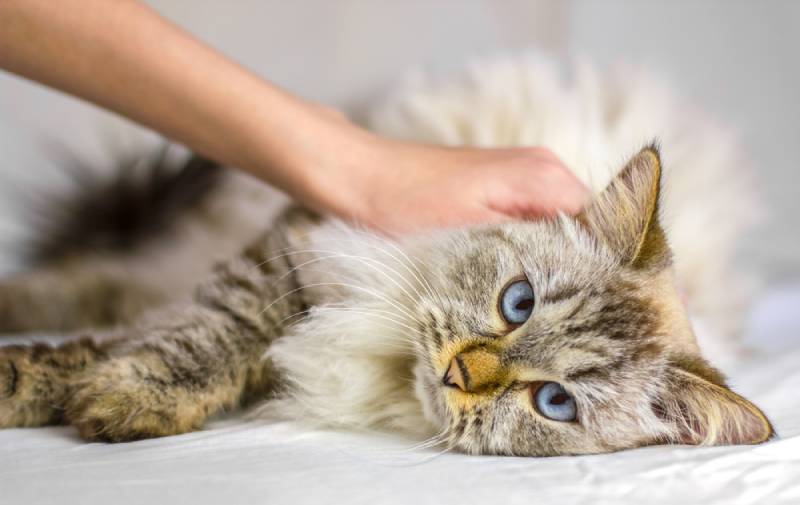
Conclusion
Radial nerve paralysis can be a scary and significant injury for cats. The underlying cause of the paralysis and whether the nerve has been severed significantly impact the prognosis. Nerve injuries typically take months to heal, and supportive care like physical therapy at home is critical to achieving a full recovery when it’s possible.
While some nerve injuries can heal themselves, ones that sever the nerve may require surgery to reconnect the nerve pieces or an amputation of the limb alternatively as needed. If you note any signs of radial nerve paralysis in a lame cat at home, it is best to bring them to a veterinarian for evaluation.
Featured Image Credit: Olesya_Alexandrova, Shutterstock


